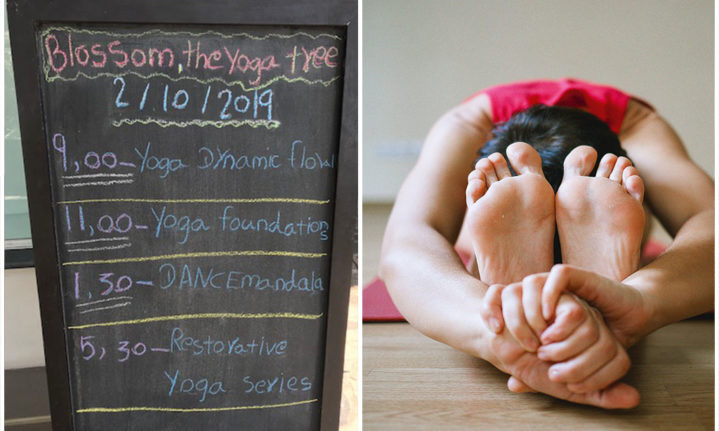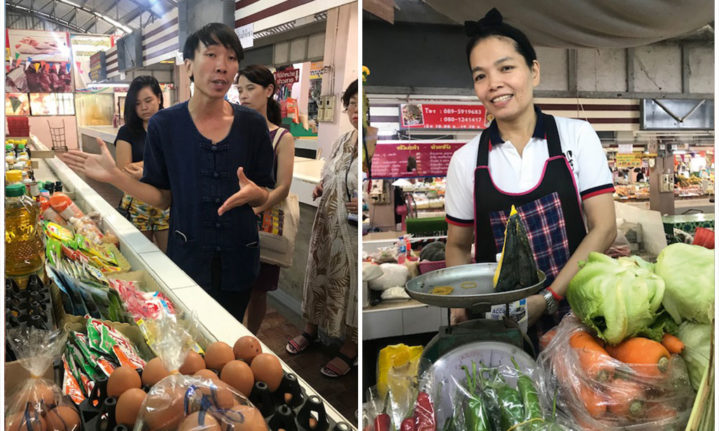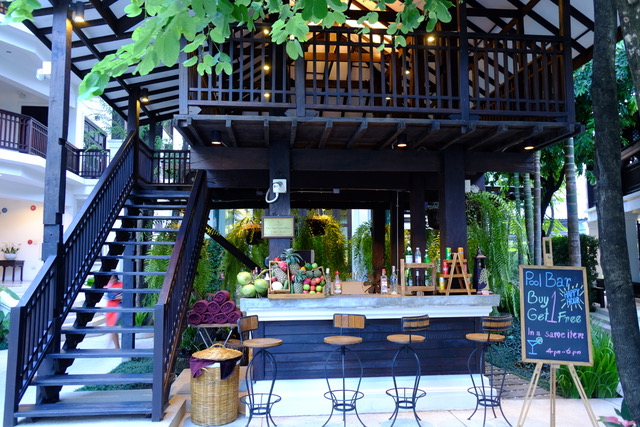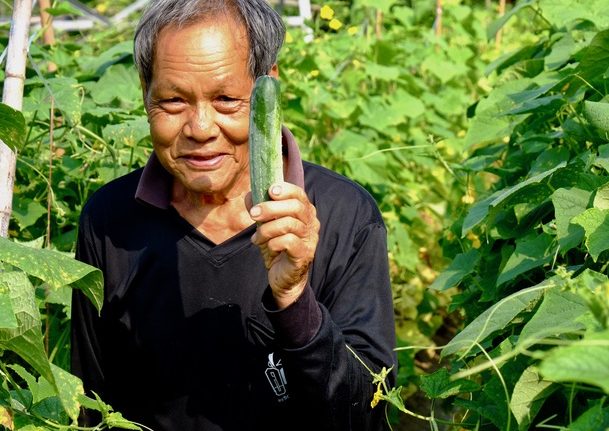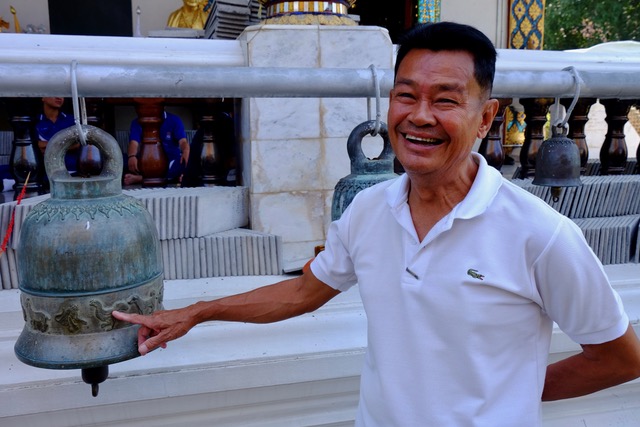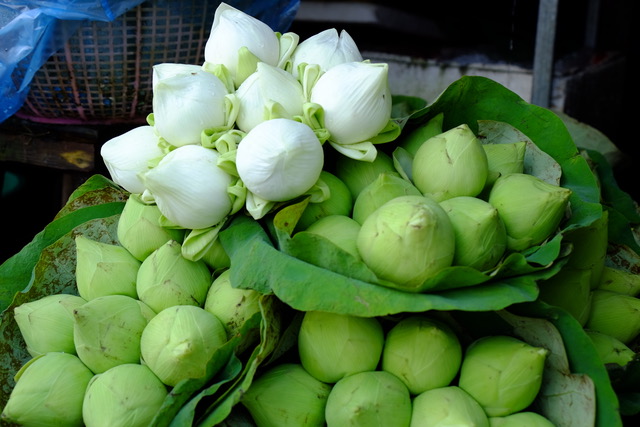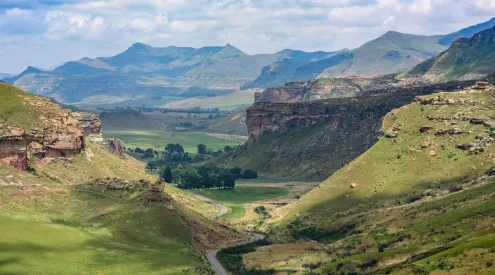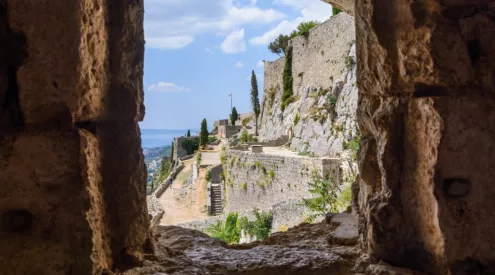Not as well known as Phuket and Bangkok, Chiang Mai is an appealing, less crowded city in mountainous Northern Thailand. In 2017 it was designated as a Unesco Creative City. Medieval moats and remnants of the Old City wall speak of the ancient past, 1296 – 1558, when the city was capital of the independent Lanna Kingdom.
Hosts of temples and now many modern buildings reflect the Lanna style of architecture, with their steeply pitched multi-tiered roofs, on a construction of teak wood. Teak pillars elevate the houses from the ground, to prevent serious flooding in the rainy season and provide shade and extra living or working space in the dry season.
Here are some of my favourite activities in and around Chiang Mai:
1. Temple (Wat) visits

Outside Buddhist temples, worshippers hang up lanterns to ask for favours and blessings. Image credit: Gillian McLaren
There are over 300 Buddhist temples in Chiang Mai. Buddhism is a way of life in Thailand, so the wats are vibrant and constantly used by locals and tourists alike.
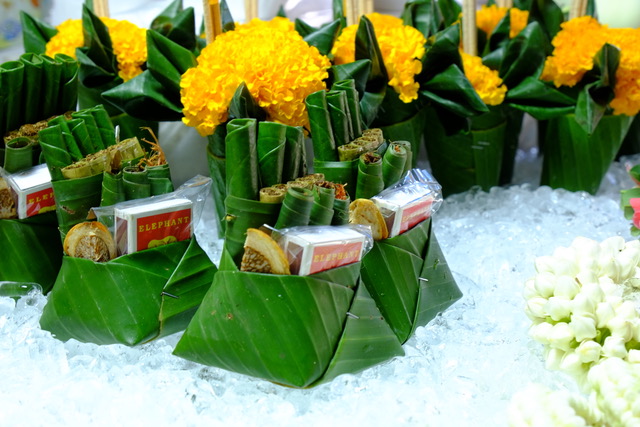
Items for worship in the Buddhist temples are sold in markets and outside the temples. Image credit: Gillian McLaren
Worshipers bring offerings of floral wreaths and items for worship in the Buddhist temples are sold in markets and outside the temples.
2. Cooking class

Teaching on sourcing the best ingredients for our Thai cooking. Image credit: Gillian McLaren
I do not like cooking, so if my husband wants to eat anything but prepared meals from Woolworths, he has to take over in our kitchen. To my surprise, however, I thoroughly enjoyed a Thai Cooking Class at Grandma’s Cooking School. Tutored by enthusiastic Chef Gobby, I managed to peel, chop, pound and pummel my way to a successful shrimp Tom yum soup and a red prawn curry.
The open-air kitchen, with highly organised units for each student, has a view of gardens where herbs, fruits and edible flowers are grown. grandmascookingschool.com
3. Yoga session
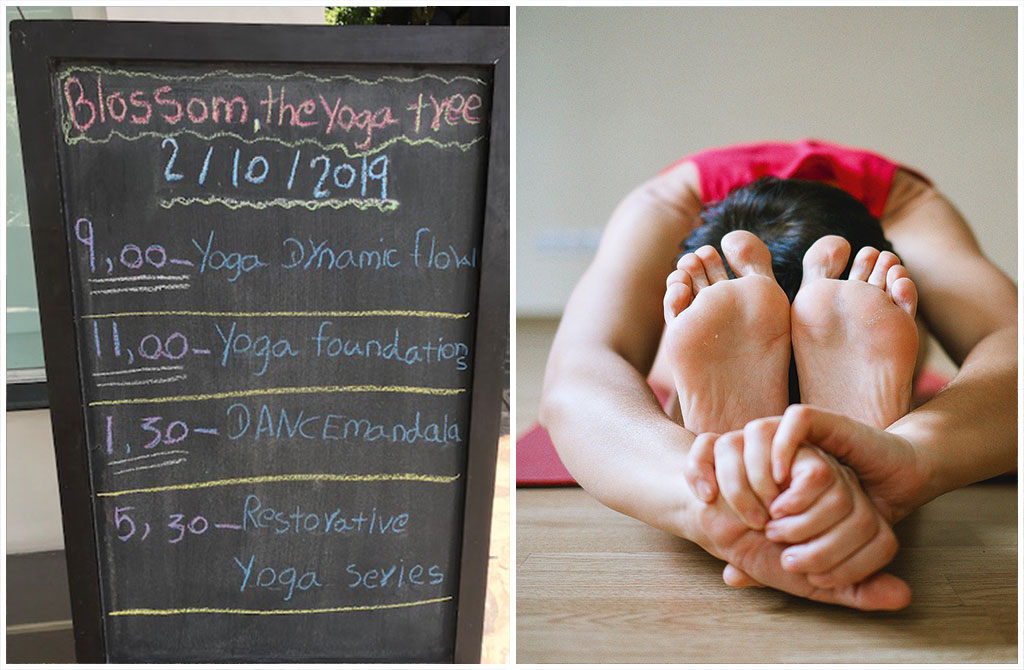
Yoga in airy second-floor studio. Image on left: Gillian McLaren. Image on right: Pixabay
In an airy second-floor studio with a view of tree canopies, I strived to ‘improve my strength and balance, through a series of energising postures’, during a beginner’s yoga class. The teacher, with his highly flexible frame, effortlessly moved into these postures, or asanas, as we contorted our resistant bodies to emulate him. blossom.theyogatree.org
4. Visit Lamphun Province
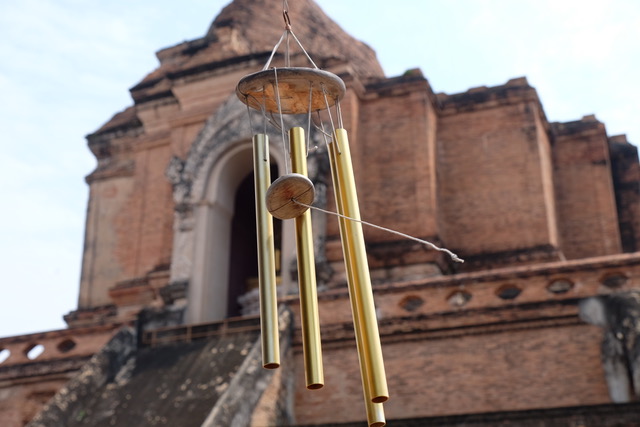
The oldest temple in the Lamphun Province, from the 8th Century. Image credit: Gillian McLaren
Lamphun, the original capital of the Haripunchai Kingdom, which was constructed along the Khuang River in the eleventh century, lies 25km south of Chiang Mai. It boasts one of Northern Thailand’s most sacred temples, Wat Phra That Hariphunchai, now represented on the one-satang coin.
A short walk outside the town is fertile countryside, with small farms producing longan, rice and vegetables.

A local farmer, in Lamphun Province, displays his produce. Image credit: Gillian McLaren
Hospitable local people invited me into their homes, to show me their kitchens, motorbikes with sidecars, garden flowers and to introduce me to their children. I was shown how the Kwoy beetle is trained to fight, a sport for the boys of the area. 
Kwoy beetles are prized for their fighting abilities. Image credit: Gillian McLarenThe male beetles are placed near a female that is kept inside hollowed-out wood, then goaded to fight for her by the owners tap-ping on the wood. When not fighting, the beetles are tied to a stick of sugar cane, by a twisted thread of cotton.
5.Food fun

Complimentary traditional food is available each afternoon at Rim Resort, next to the swimming pool. Image credit: Gillian McLaren
Humble street food is excellent in Chiang Mai, with Thai people working hard to cook from their mobile street carts. From tom yung goong ( spicy shrimp soup) served in a plastic bag, to som tam (green papaya salad), or fried dough in the shape of a dragon, I enjoyed the Lanna influenced flavours and meeting the chefs. The night market on Chang Puak Gate is full of vendors, selling their personalised fare at very low prices. Unassuming and simple, street food is well known throughout Thailand and patronised by locals and tourists alike.
However, a special treat was trying some of the cuisines in top-end restaurants, some aspiring to their first Michelin Star. Blackitch Artisan Kitchen in a secret spot above a gelato shop, sees Chef Black create new dishes daily – for a nine-course tasting menu – based on the fresh produce he sources locally. Catering for only 16 guests at 3 tables, with zany wall murals in black ink, the atmosphere is intimate and friendly. A master of fermentation techniques, Chef Black’s home-made rice wine is not to be missed! blackitch.com
Cuisine de Garden, in the Hang Dong area, is set in a lush garden. Playful dishes are conjured up in a 10-course set menu, inspired by elements of nature like the soil, the ocean or a bird’s nest, explicated by the chef as he presents his creations. Surprises for my palate included lychees frozen in dry ice, in a performance art extravaganza, at my table. In a pleasing personal touch, own-ers Khun Mon and Khun Peach welcomed each guest. cuisinedegarden.com
6. Thai massage
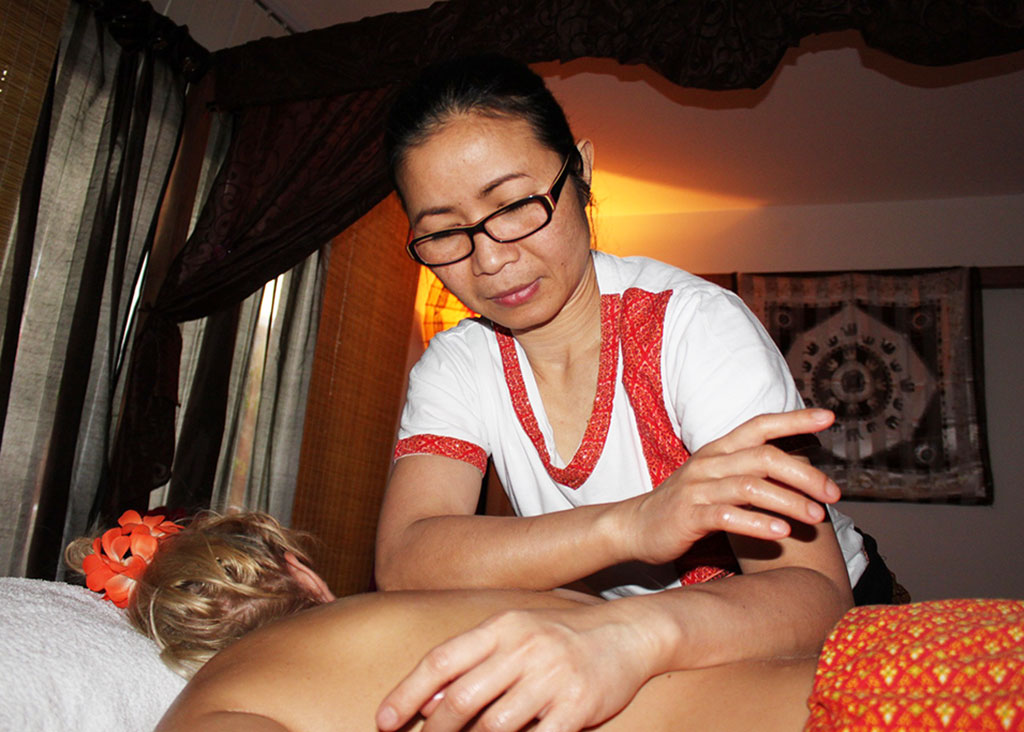
Traditional Thai massage. Image credit: Pixabay
As massage is a way of life in Thailand, there are many massage parlours, spas that are independent and those that are part of a hotel. Massages, especially of feet, or head and shoulders, are available on the street. I prefer the privacy and air-conditioning of an indoors massage, so tried the in-house spa at 137 Pillars House, which was sublime. A combination of three styles included stretching in the Thai way, hot stone treatment and lastly aromatherapy. After 50 minutes I was turned to jelly, so returned to the oasis of my suite, to doze. 137pillarschiangmai.com
There are plenty other ways to have fun in the Chiang Mai region, including zip-lining in a tropical forest, driving 60 km to quiet Chiang Dao set in the mountains to trek, and meeting local hill tribes. Visiting an elephant sanctuary – to see Asian elephants up close – is a popular pastime, but be warned that it is much like a zoo and concepts of conservation differ from ours in Africa. Get to Chiang Mai soon, while it is still relatively uncommercialised as the city has developed more modern shopping areas since I was here five years ago. Have fun!
Recommended accommodation
Na Nirand Romantic Boutique Resort is perfect for a wedding, a honeymoon, an anniversary celebration, or a spoil of any kind, because of its timeless charm. Set on the Ping River, under the shade of a huge, ancient tree, this elegant hotel has a manicured garden with a profusion of flowers. I particularly enjoyed the buffet breakfast with excellent Thai cuisine, while sitting at tables next to the river, to watch birds and passing boats. A highlight is the swimming pool – a pleasant social space – flanked by palm trees and looking out to the spreading canopy of the presiding tree. Guests receive a special gift on their beds after turndown each evening. www.nanirand.com

Swimming pool, a perfect length for some swimming training. Image credit: Gillian McLaren
137 Pillars House, unashamedly five-star, is ultra-luxurious with personalised service including a private butler. My suite was spacious, with white walls. A stand-alone ball and claw footbath had me in sensual heaven with the top quality bath products. The hotel spa is immaculate, with skilful masseuses. A highlight was the 25m swimming pool next to a 6m wall that is covered by a creeper. Kleeb Lamduan Thai cookies – resembling the Lamduan flower – are placed on black pottery stands in the suites each night. www.137pillarschiangmai.com
The Rim Resort sports Lanna-style architecture, with teak walls and floors. Rooms look out onto the swimming pool, or onto a tropical garden. In the afternoons, it was fun to sample complimentary traditional Lanna delicacies and participate in Thai cultural activities, including making handicrafts or food. www.therimchiangmai.com
Getting there
Singapore Airlines Flights from ORTI in Johannesburg and Cape Town International Airport depart every day. Three additional flights (SQ481) will depart from OR Tambo International Airport on Wednesday, Friday and Sunday evening at 22:30 hrs and arrive in Singapore the following day at 1455 hrs. The return flights from Singapore (SQ482) also depart on Wednesday, Friday and Sunday afternoons at 16:35 hrs and arrive in Johannesburg at 21:10 hrs on the same day. Flight time to Singapore is usually ten hours twenty-five minutes. The A350-900 has an extra-wide body and high ceiling. Air is filtered to remove impurities and is completely replaced every 2-3 minutes. Business Class is exceptional, with fully reclining beds, personalised service, plus fine cuisine and wines.
From Singapore, fly SilkAir direct to Chiang Mai Airport
No visa is required for South African passport holders to Singapore or Thailand.
What to bring Singapore and Chiang Mai are hot and humid in summer and pleasantly warm in winter. Lightweight, breathable clothing – especially pure cotton – is best, with a hat or portable umbrella to protect you from the sun, or a rain shower. Consider comfortable closed shoes for walking in Chiang Mai or nearby villages, but sturdy sandals will suffice.
Gillian’s trip was curated and hosted by the Tourism Authority of Thailand South African representative office. www.blog-thailandsa.co.za
Text: Gillian McLaren (@Jetset_Gillian)
Images: Gillian McLaren and supplied










